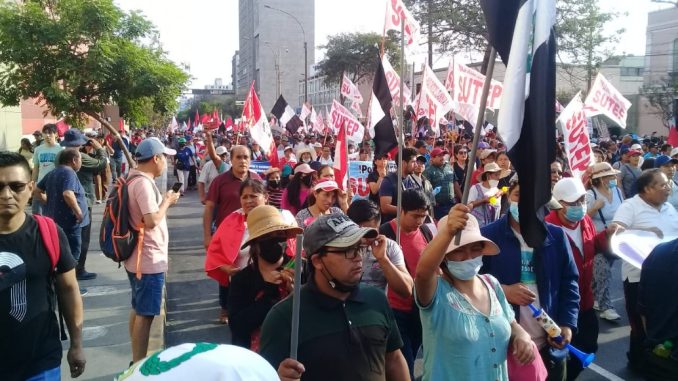
By correspondent from Lima
Today, January 19, has been a decisive day for the country. Every hour and day that passes, the struggle in the streets reaches a situation only seen in times of great changes and revolutions.
In spite of the massacre that ended the lives of more than 50 workers and students, it has not been possible to stop the mobilizations. And Dina and the right wing cannot govern the country. This is how Peru finds itself, as we have already said, in a chronic crisis of the institutions and the whole bourgeois regime that has to be resolved in the coming days.
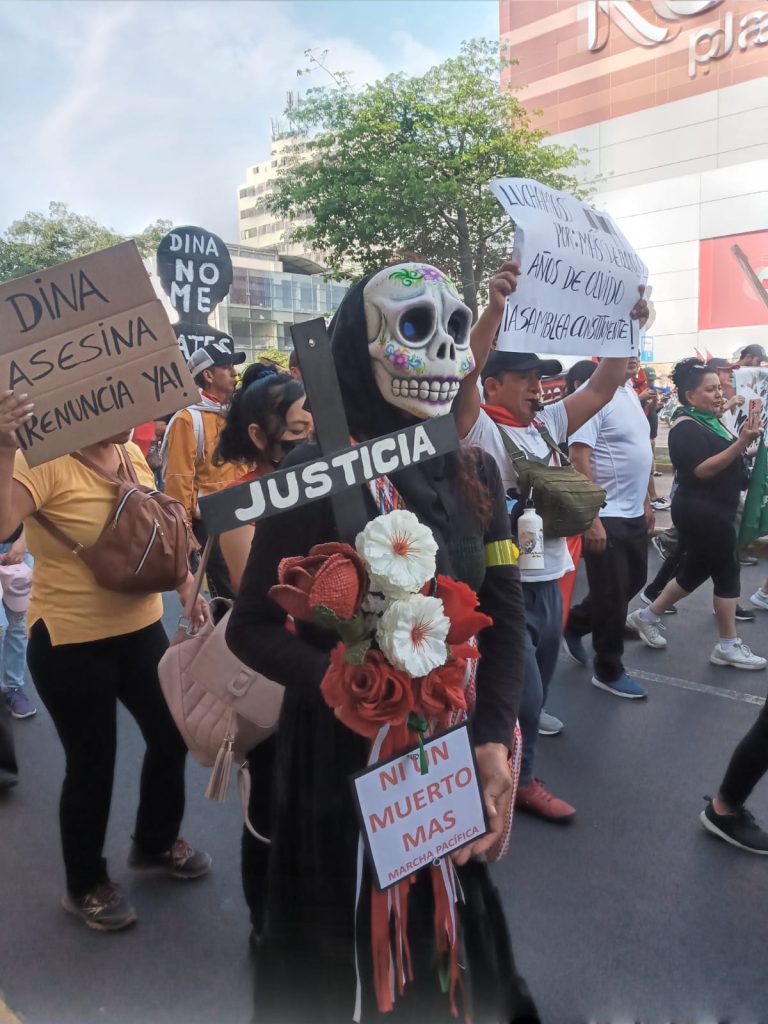
The Aymarazo, ended up accelerating the intensity and extension of the social rebellion, not only in the east but also in the north of the country, adding blockades in 139 places, and the mobilizations at the beginning of the week in the capital and its neighborhood of Miraflores with more than 10,000 people, have been the warm-up to break out in La Capital today with demonstrations since the early hours of the morning and which have not yet concluded, as we write these lines.
As the days go by, the possibility of the resignation of Dina Boluarte and the closing of the congress grows stronger, since the only response from the government is that expressed with crudeness by the right-wing congressman, Jorge Montoya “more bullets for the vandals” and Dina herself today, stating that she will comply with the fujimorist constitution and will continue the criminalization of the protest.
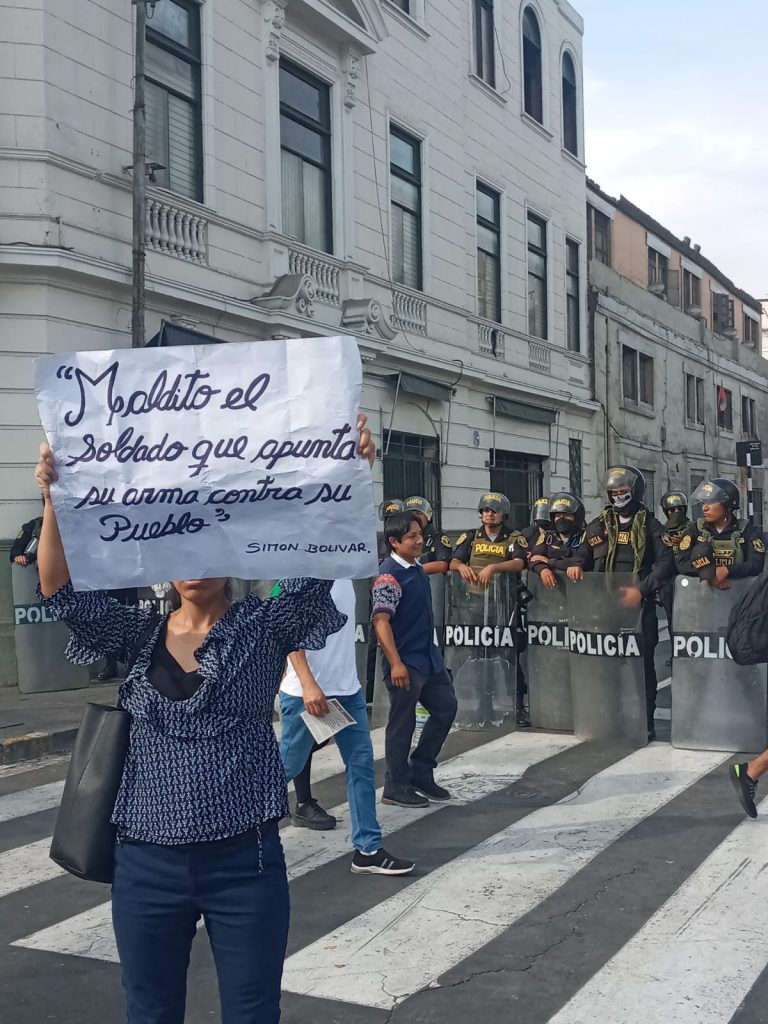
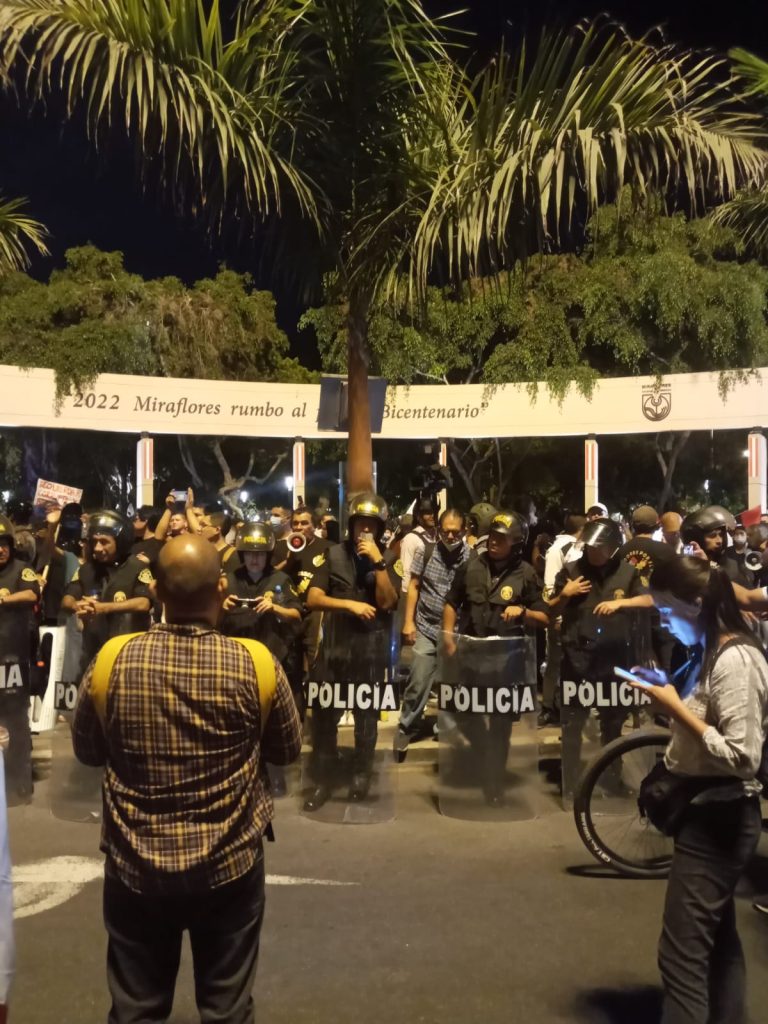
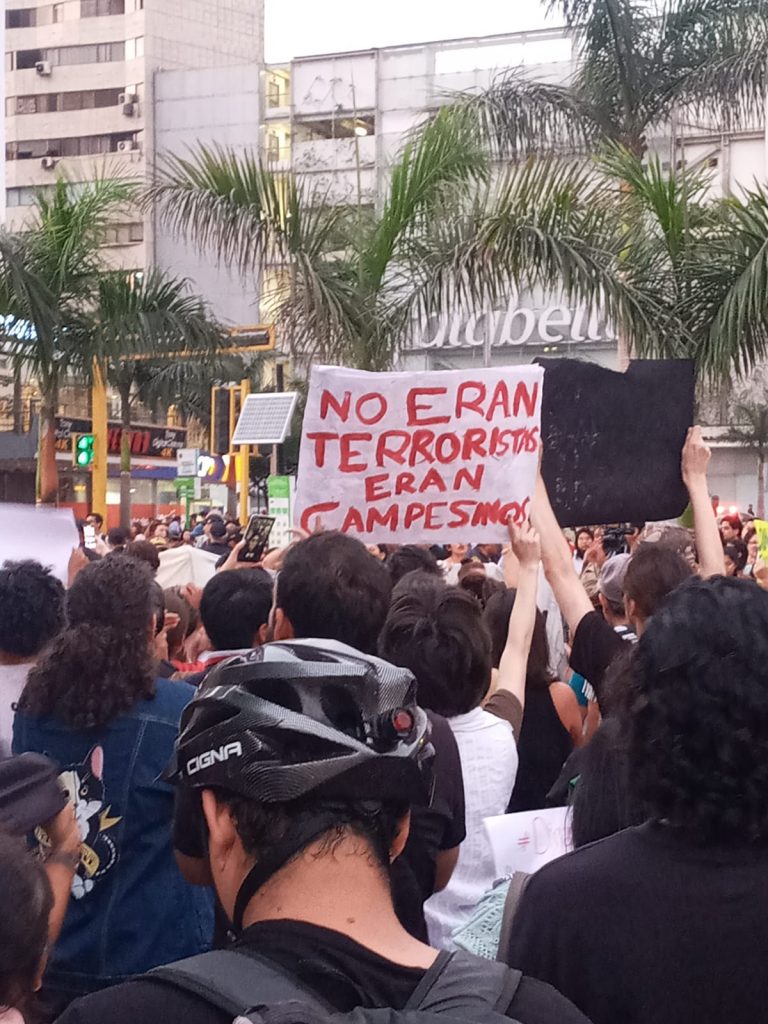
As a result of this policy, the civil-military dictatorship has developed a strategy of witch-hunting, authoritatively arresting several leaders of the Ayacucho Defense Front (FREDEPA), of the Plaza San Martin, intimidating leaders of the Peoples’ Assembly, selectively assassinating, as in the case of the Cusquenian leader Remo Candia, and adding new fatalities today. All this under the fabrication that the leaders are “terrorists” or are part of an international conspiracy led by Evo Morales or the Ponchos Rojos, without showing reliable evidence of such hallucination.
The second march of the 4 Suyos must conclude with the tasks left by the first one: to break with the capitalist system.
It is within this framework of polarization (between the poor majorities and the rich minorities), forced by the conservative and reactionary right wing, that today, Thursday, has begun what some have called the March of the 4 Suyos. This denomination refers to the popular rebellion of 2000 that ended the Fujimori dictatorship, whose aim was not only to overthrow the dictatorship, mobilizing hundreds of thousands throughout the country, but also to develop a new democracy without exploitation or oppression of one class over another.
This fundamental task was not achieved because we passed from a mafia civilian-military political regime to a mafia civilian bourgeois democratic political regime, which has now advanced to develop as a military one. One more piece of evidence that in a capitalist society, democracy and dictatorship end up alternating according to the level of the rise of the workers’ and popular struggle.
And what we are observing precisely today is a new rise of the popular sectors and that there are extraordinary conditions to defeat the government and the whole regime.
The greatest weakness of this new March of the 4 Suyos is not its combativeness, but some confusion in its program and objectives. We want to be clear, we understand that an advance of the elections may be the concession that the sectors of power could grudgingly yield, but the elections will be a new trap to achieve demobilization. Elections called within the framework of the undemocratic constitution of 1993 and the electoral college managed by the Congress, will not only force us to elect once again among the same politicians and parties that today the people reject, postponing once again the application of the immediate measures that will allow us to overcome misery and injustice. Just as an example to ratify our alert against the trap of “bringing forward the elections”, it seems useful to repeat the recent declarations of the former advisor of the 2000 transition government, Alberto Adrianzen, “…the way out is for Dina Boluarte to change the ministerial cabinet and bring forward the elections to 2023…”. It is a political maneuver that is again postulated as a replacement card, in the face of the crisis of Boluarte’s civic-military political regime, with the sole objective of sustaining the institutions in force.
The conditions exist for the popular organizations of the workers, the peasant and indigenous communities, the youth and all those who struggle, to define who should govern and take in their hands the destiny of the country, calling for a Free and Sovereign Constituent Assembly in which the people will decide the course that Peru should take.
The thousands of workers from the provinces who have arrived in Lima and several delegations that are being attended to on the campus of the Universidad Nacional Mayor de San Marcos (UNMSM), do not stop walking the streets demanding the resignation of Bouluarte and the closing of the congress, and it is the duty of those of us who claim to be Socialists and Revolutionaries to collaborate and alert so that this tremendous struggle, an example of courage and class unity, is not oriented towards conciliation and the support of a system that is incapable of giving the slightest response, neither in Peru nor in the world.
That is why we will continue accompanying our people in the streets and we will strive for the unity of those who want to change everything, those of us who are not satisfied or deceived by cosmetic changes. We call for the broadest unity of the anti-capitalist vanguard to achieve the true liberation of our people.








